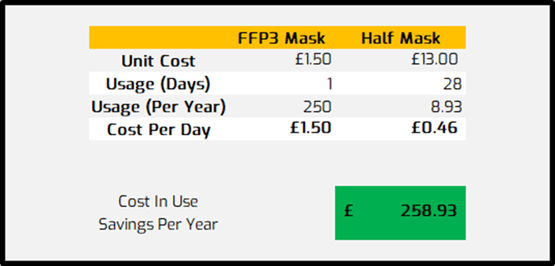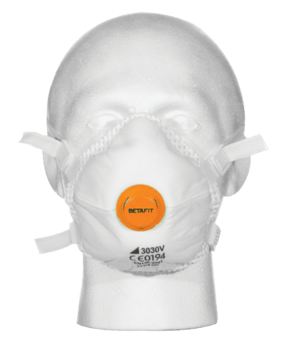Respiratory protection is crucial in the construction industry, where workers are often exposed to harmful dust, fumes, and other airborne particles.
In this article, we will compare two popular respiratory protection options for construction workers - the Force 8 mask and the FFP3 mask.
What is the JSP Force 8 mask and filter?
Lion Safety - JSP Force®8 HalfMask with PressToCheck™ P3 Filters | LION Safety
The Force 8 Filter is a reusable filter that is designed to be used with JSP Force 8 Half Mask Respirators.
This filter is made of high-efficiency particulate air (HEPA) filter media that is designed to capture particles down to 0.3 microns in size. It features a soft and durable thermoplastic rubber mask that provides a comfortable fit for extended periods.
The best part? It also features a "press-to-check" feature that allows workers to easily check if the filter is fitted correctly, ensuring maximum protection - literally, just by pressing the side of the filter to check it still works!
What is an FFP3 mask?
The FFP3 mask is a disposable option that is designed to provide protection against harmful particles. This mask features a close-fitting design that creates a seal around the nose and mouth, preventing particles from entering the mask.
It is made of multiple layers of filtration material that are designed to capture particles down to 0.3 microns in size.
Which option offers more protection?
Both the Force 8 Filter and the FFP3 mask provide high levels of protection. The P3 rating offers the highest filtration effectiveness and retains about 99.95% of particles.
This can be especially important in construction environments where workers are often exposed to high levels of harmful particles.
So, either will offer the same level of protection at an initial glance!
What about comfort?
Comfort is another crucial factor to consider when choosing respiratory protection for construction workers - it's a long shift sometimes!
Both the Force 8 Filter and the FFP3 mask are designed to be comfortable to wear for extended periods.
However, the Force 8 Half Mask Respirator may be more comfortable, as it does not create pressure points on the nose bridge like the FFP3 mask can.
Is there a winner on cost?
The Force 8 Filter is a reusable option that can save money in the long run. This is because the filter can be used multiple times and only needs to be replaced every 28 days when it becomes clogged with particles.
The "press-to-check" feature makes it a much more reliable option - after all, how do you test an FFP3 mask, without
On the other hand, the FFP3 mask is a disposable option that requires no maintenance or cleaning. However, this can be more expensive in the long run as workers need to replace the mask after each use.
If you're spending £1-2 on an FFP3 mask that's used once per day, then in 30 days that's £30-60. Compare this to the replacement Force 8 filters, which cost £8-16 and are replaced once per month - there's an obvious winner here!
The cost-saving benefit of using the Force 8 Mask & Filters is clear in the table below (based on averages):

But remember - this all depends on user behaviour, the company culture towards wearing masks, and what price you are able to purchase these for.
Which is easier to use?
Another advantage of the Force 8 Filter is its versatility. The Force 8 Half Mask Respirator is compatible with a range of different filters, making it a versatile option for those who require protection against different types of particulate matter.
This can be especially important in construction environments where workers are often exposed to a range of different particles.
So, which one should I use?
In comparison, the FFP3 mask is a more straightforward option that provides a high level of protection against harmful particles.
When it comes to maintenance and cleaning, the Force 8 Filter requires some maintenance to ensure maximum protection. The filter needs to be cleaned and checked regularly to ensure it is fitted correctly and not clogged with particles. The mask itself can be wiped clean with a damp cloth.
An FFP3 mask, on the other hand, requires no maintenance or cleaning as it is a disposable option. An ideal option for companies with staff on short-term contracts, or, simply don't want to carry their mask around with them all day, every day.


